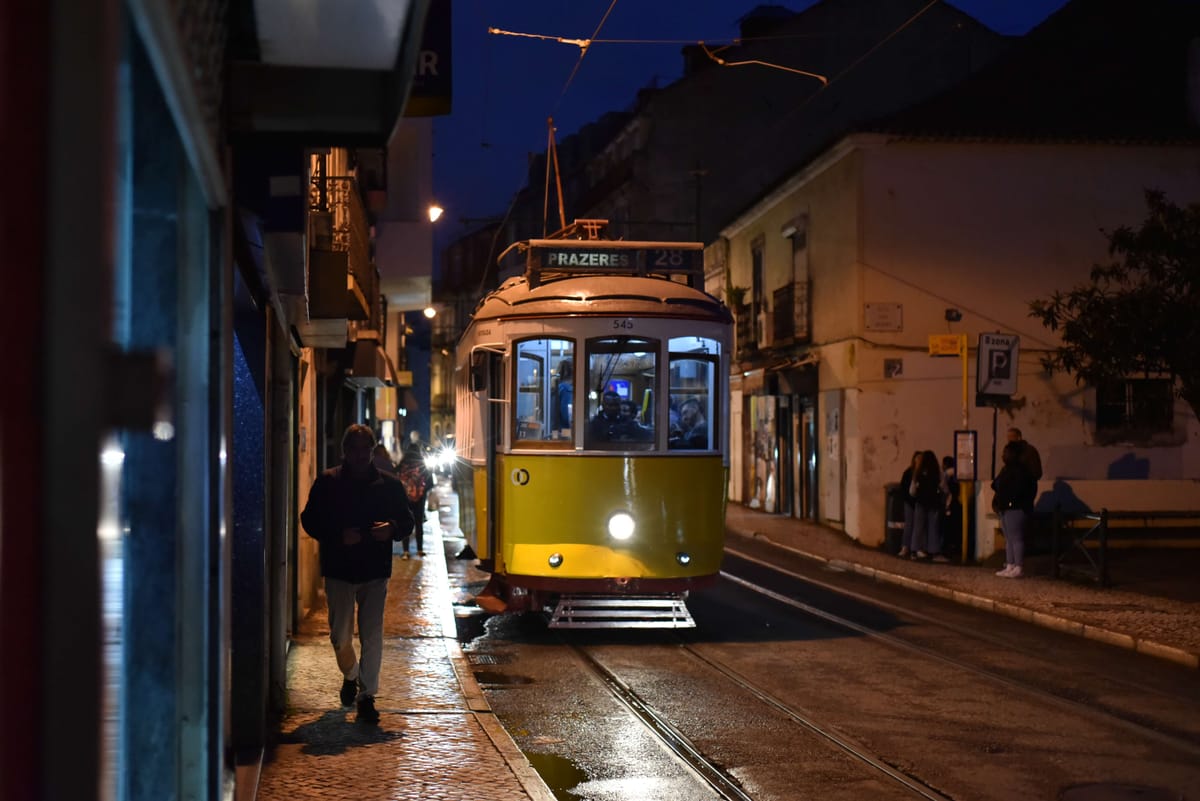
On Nov. 1, 1755, the city of Lisbon was nearly destroyed. A series of devastating earthquakes that are believed to have been so powerful they would have registered as high as 9.0 on the Richter scale leveled the capital of Portugal.
The quake was so violent, it generated a tsunami with 20-foot high waves that crashed into the port city as well. At that point, the future of Lisbon was in doubt as the upheaval subsided from what had become known as the “Great Lisbon Earthquake.”
Almost three centuries later, not only has Lisbon been rebuilt, but it has also become a popular tourist destination in Europe. In 2023, more than 3.6 million international tourists visited the city of just 548,000 residents.
At some point, nearly each and every one of those visitors likely found themselves riding on Lisbon’s iconic bright yellow trams (streetcar or trolley) that maneuver through the same streets that had once been turned to rubble.
On a recent trip to Lisbon in which I stayed in the historic Alfama district, I rode the trams and got a feel for just what makes them special.

Despite the majestic views and historic architecture that attract tourists to Lisbon, it has been the bright yellow trams that have become the symbol of the city. They are featured in movies, TV shows, paintings and popular postcards that are sent around the world.
Go anywhere in Lisbon, at almost any time of the day or night, and you’re bound to see a tram cross your path. From 6 a.m. when they first start their routes until past midnight, they can be seen gliding slowly through the colorful mosaic of cobblestone that makes up the narrow, winding paths — which can at times feel more like a maze than a network of streets — in a major city.
Lisbon (also called Lisboa by the Portuguese) is currently just one of three cities in Portugal — along with Porto and Sintra — to continue use of the trams, and the only one to keep them as a vital part of its public transportation system.
“Trams in Porto are only for sightseeing, while in Lisbon they are a local transportation mode,” said Marta David, a resident of Lisbon. “But we also have touristic trams in Lisbon. The Tram 28 in Lisbon is the more famous one, and I strongly recommend taking it as early as possible — until 9 a.m. You should be considerate to locals, especially older people and families with young children.”
The electric tram didn’t make its appearance in Lisbon until 1901, but it had a progenitor: The first tramway was a horsecar line in 1873 by Carris. At that time, the vehicles were called “Carros Americanos” because the idea came from America. However, they were unable to traverse the steep hills and rocky roads in areas like Alfama, until they switched to cable cars in 1884. The first electric tram, which went into operation at the dawn of the 20th century, carried passengers from Cais do Sodré to Algés, a distance of just under 10 km.
The Lisbon tramway network is still owned and operated by the Carris company. Many of its carriages are easily recognizable by the bright yellow that can be found on the celebrated Tram 28, which covers the areas from Martim Moniz Square to Campo de Ourique and takes passengers through Alfama past the historical sites.


The vintage look inside each of the passenger trams adds to the overall feel of going back in time to the early 1900s.
“I was in Alfama at the starting point of route 28,” said Lisa Streets, who recently visited Lisbon. “The lineup was epic. I enjoyed watching trams drive past and taking photos of them with cool urban backgrounds.”
There are five other lines, and one ride costs 3 euros for a ticket, which can be purchased from the driver. In total, the network in Lisbon spans 19 miles and consists of 63 trams in operation. Of those, 45 are considered historic remodelado (remodels), made to look and feel just as they were a century ago.
The trams work in conjunction with other public transportation such as the bus, the railroads and the subways. Tourists are encouraged to purchase the Lisbon or Viva Viagem cards, which can be used on all forms of public transportation and offer a less expensive rate.
Yet, this has also become an issue for those like Pedro Pinheiro Vaz, who was born and raised in Lisbon.
“It would be fantastic if people could think of them as public transportation — because that’s what they are — and not just another tourist attraction,” Vaz said. “Locals gave up long ago on waiting in line for hours to get on a precious means of transportation that could be really useful for people who live in the city.”
Despite those waits, the future of the tram could be on shaky ground. As ride-sharing apps continue to proliferate throughout the region, and people become in more of a hurry to see all that Portugal has to offer, it has become seen as a relic of a bygone past.
But that is also what makes the tram so appealing to visitors and residents alike. It’s a reminder of when people weren’t in such a hurry and there was time to hold a conversation or watch a sunset while looking out the window of the tram rather than down at a cell phone.
“In Lisbon, we rode Tram 12 from Martim Moniz since there was no line,” said Lynn Fox. “Later in the day we got on Tram 28 near Estrela and rode back to Martim Moniz and also avoided any lines. All were fun and enjoyable.” •

